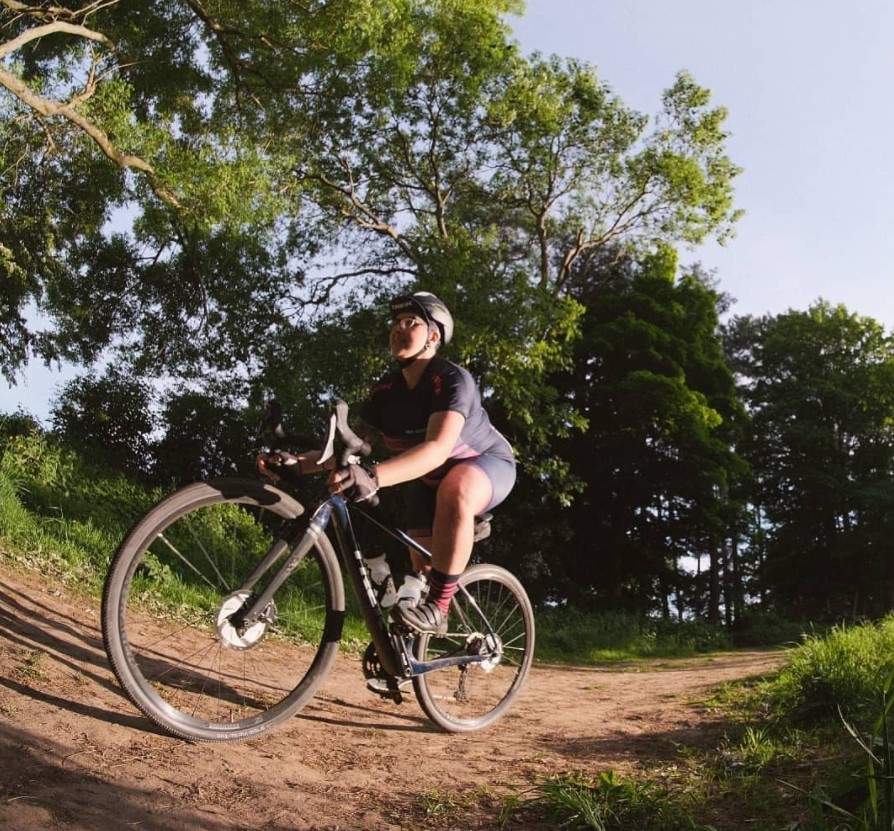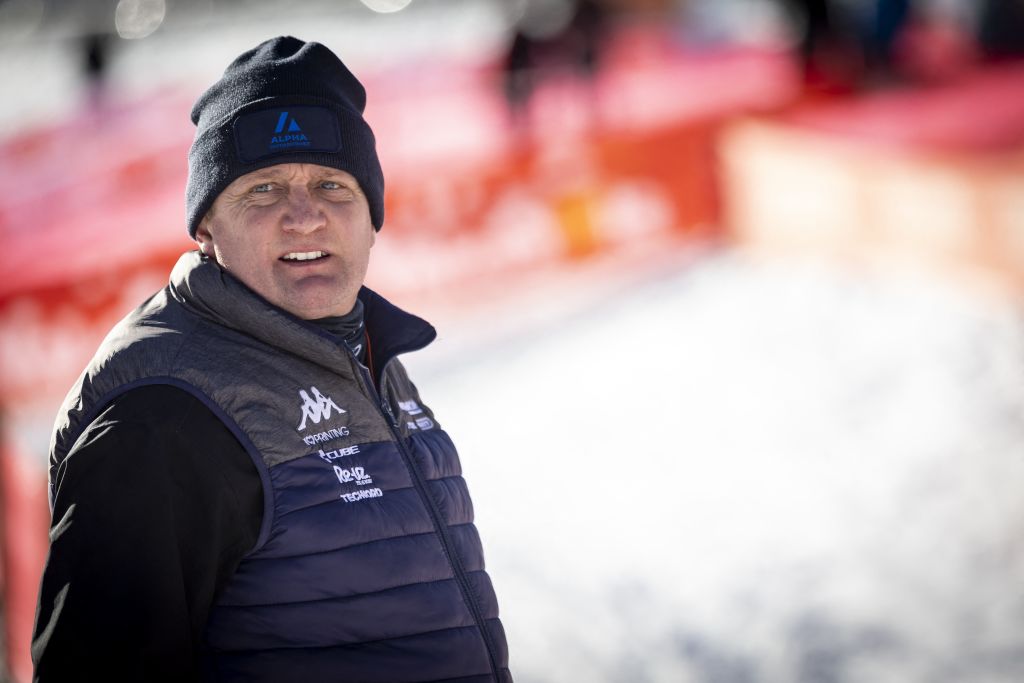Body image and bicycles: in conversation with Kailey Kornhauser and Marley Blonsky
Two weeks after the launch of 'All Bodies on Bikes' we caught up with the pair to delve deeper into its overriding message
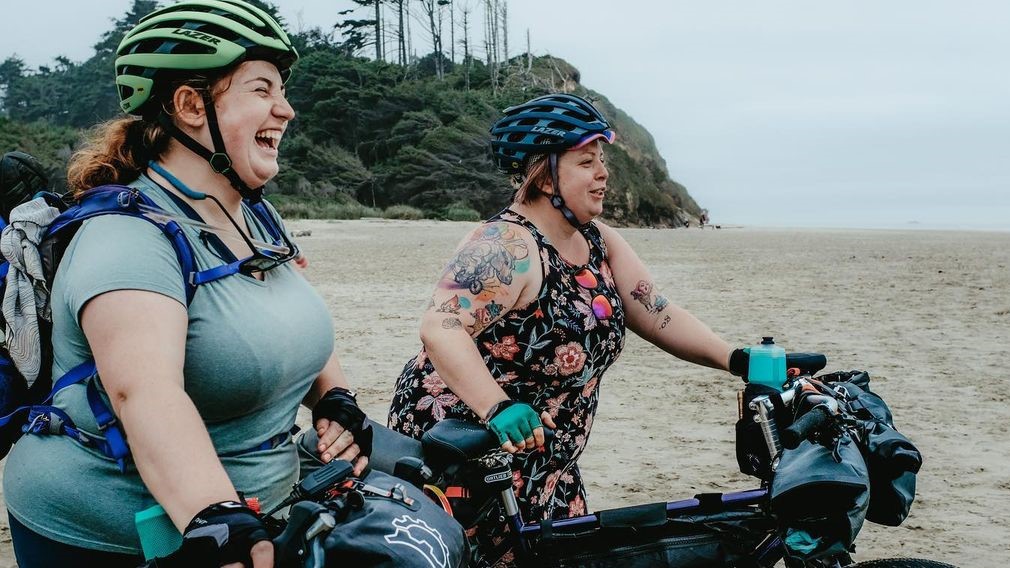
It’s been just over two weeks since Shimano launched its film ‘All Bodies on Bikes’, which followed self-proclaimed fat cyclists Kailey Kornhauser and Marley Blonsky on their first bikepacking trip together from Corvallis to the coast. At the time of writing, the film has reached almost 150,000 views, and both Kailey and Marley have been overwhelmed with the positive reaction they’ve received.
We caught up with them to find out what kind of response they’ve had from viewers, and to delve deeper into the important message the film carries: that all bodies on bikes are acceptable, regardless of their size or abilities.
- Shimano launches ‘All Bodies on Bikes’, a film celebrating riders of all shapes and sizes
“When you put something like this out there and share such vulnerable things, you wonder how it’s going to be received,” begins Kailey, who shot to prominence when she appeared on the front cover of Bicycling magazine in 2019 following her 1,000-mile trek across Alaska.
Marley, a long-time proponent of Fat Activism — a political movement advocating for the rights and dignity of fat people — agrees, and says, “it’s been surreal.”
Both have been flooded with messages of support and personal stories from people, ranging from the relief of finally seeing themselves represented, to incredibly heart-warming stories of finally feeling inspired to get back in the saddle.
“I got a message from somebody saying they gave up riding their bike 10 years ago because they felt too fat,” Marley explains. “They got a flat tyre and thought that they’d caused it. They said seeing me post on Instagram about fixing flat tyres and this being a normal part of cycling life, gave them the reassurance that they needed.”
Kailey nods and adds, “someone posted on Facebook to say that they went mountain biking in the dark — which I’ve never done and is way cooler than what I’ve done! — and when they got really scared, their partner told them to ‘channel your inner Kailey’.” She beams, in disbelief. “I mean, wow, what a frickin’ honour!”
The latest race content, interviews, features, reviews and expert buying guides, direct to your inbox!
While it makes sense for so many other larger-bodied cyclists to relate to the film, they’re not the only ones to express these kinds of sentiments to Kailey and Marley.
“We’ve gotten lots of messages from skinny white men, thanking us for putting out another image of what a cyclist looks like,” Marley says. “That really made me feel good, because I think there are a lot of people out there who fit the image of a ‘cyclist’ and they want to make the sport more inclusive, but they don’t know how to because of the body they’re in.”
“Those are the ones that have surprised me the most,” agrees Kailey. “We’ve been hearing from people in the racing community saying similar things. Marley and I don’t come from that background, so to hear that they relate to our struggles with body size, food and biking, it’s really powerful.”
- Plus size cycling clothing: where to find it and what to look for
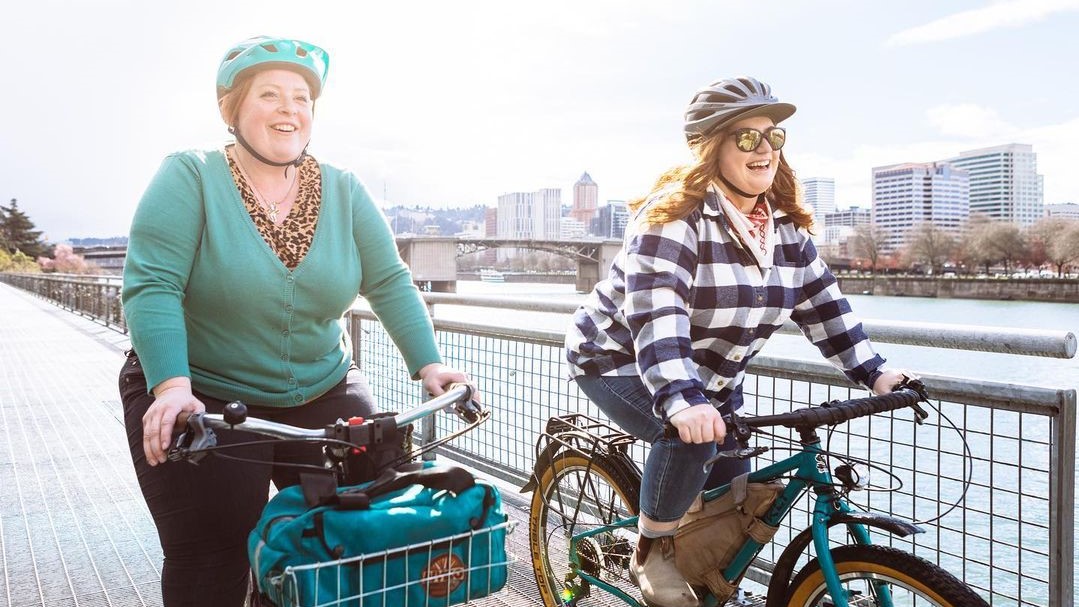
It’s easy to see why so many people relate to the movie, which is just over 13 minutes long and opens with some serious shots of Kailey shredding the trails, before taking a nosedive into the dirt in a shocking moment of comic relief.
“That was a real crash!” Kailey laughs. “After they checked that I was okay, they said they were really hoping they might catch a crash to humanise the opening mountain biking scene, so it stayed in. They said they wanted the first 45 seconds to open like every other mountain biking edit, with the music and the scenery, but then for it to be nothing like that for the rest of the film. I think they achieved that.”
Following the grand and comedic opening, the rest of the film follows Kailey and Marley as they bikepack together, interspersed with footage of Kailey maintaining her bike in the workshop and Marley joyfully pedalling around her neighbourhood in Seattle. Over the course of the film, the two embark on a 60-mile bikepacking trip together for over two days, heading from Corvallis to the coast. They’re clearly having a wonderful time, camping halfway through the route and culminating with them cycling in the sea before jumping in with a bunch of their friends and film crew.
‘All Bodies on Bikes’ is primarily a film about joy, but it carries with it an important message. As Marley states in the first couple of minutes, she and Kailey came together and realised that there was a void in the cycling world where nobody was discussing size inclusion. “This is just our life. We ride bikes, we have fun, and we’re fat,” Marley tells us.
Having been a Fat Activist for the past six years, this is a pivotal moment for her. On the back of her work and the success of this film, both Marley and Kailey have been meeting with top-level marketing executives from big-name brands like Giant and Shimano, to have these exact discussions. “It feels so validating to finally be having these conversations. It feels like we’re on the right path, and we do have a valid message,” Marley says. “This is a really big deal, and I’m trying not to diminish that. This is what we’ve been working towards.”
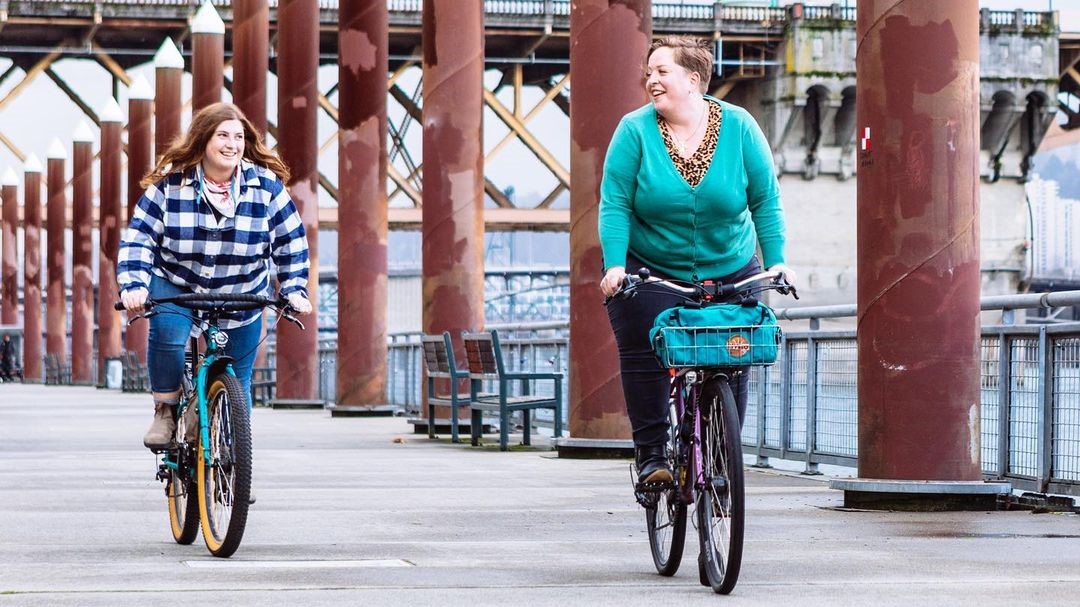
While both Kailey and Marley rightfully revel in the positive response they’ve received for the film, they also remain aware of the unique position they hold. “We feel really lucky that we haven’t received the type of directed hateful messages that other people in this space have,” explains Kailey. “There’s a multitude of reasons why that might be, and a bunch of them will centre around privileges that we have in this space.”
Marley elaborates on this: “Fatness exists on a spectrum, which is something I first heard articulated by Aubrey Gordon. The spectrum goes from ‘small fat’ all the way up to ‘infinifat’, and Kailey and I — depending on whose sizes you’re looking at — fall within small- to mid-fat. We have a lot of privilege in that space, for example, we can get on bikes from a regular store, for the most part, and we can move our bodies in a way that most of society thinks is okay. We can go on aeroplanes and in doctors’ offices.”
“Plus we’re white,” she continues, “and we also have relative ‘pretty privilege’. There’s a lot that goes into it, and I think that’s a big reason why Shimano is telling our story. But there are a lot of other fat people on bikes that are either on lower income, or using their bikes for transportation, for example, whose stories aren’t being told. Kailey and I are trying to be really cognizant that we don’t speak for all fat people, but also we have this platform, so we can pass the mic and elevate other stories.”
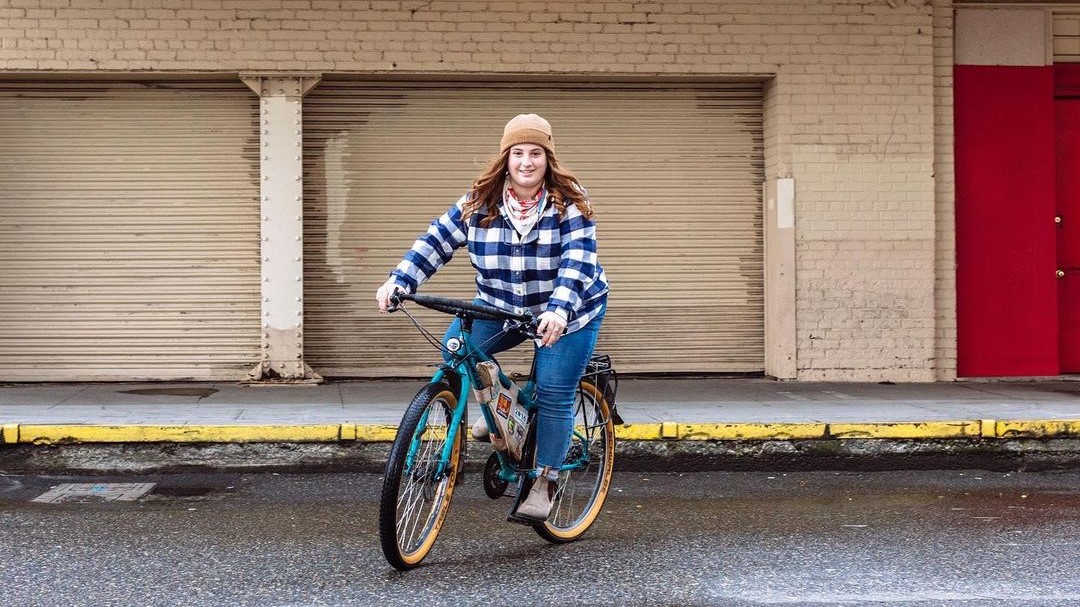
The platform Marley refers to is allbodiesonbikes on Instagram, an account that the two of them launched at the same time the film came out. It’s largely modelled on unlikelyhikers, a diverse outdoor community with a thriving Instagram account and podcast, and the goal is for it to display community-generated content for anyone who puts their body on a bike.
“Similarly to how Unlikely Hikers got started, there was a need for a community for folks in larger bodies who ride bikes, so we’re hoping that this will generate that community,” Marley explains. “It’s to increase visibility and representation among different shaped bodies on bikes, and hopefully different colours and different abilities. It’d be awesome to get submissions from people using adaptive cycles, but we’ll see where it goes.”
Marley went on to explain her reservations about the name of the film and the platform. While both she and Kailey recognise that having the term ‘all bodies’ should imply inclusivity to all, the name was finalised around the same time that the ‘all lives matter’ response to the Black Lives Matter movement was gaining traction, and they didn’t want the ‘all’ to carry the same connotation. It’s their hope that people will see it as a space for every body, but recognise that for this to happen, the diversity of bodies showcased on the platform needs to be wider.
When asked how they plan to go about doing this, Kailey refers back to the inspiration they’ve drawn from Unlikely Hikers: “We’ve both really looked up to Jenny’s work [Jenny Bruso, the group’s creator], and we know that she directly contacts people to encourage them to submit their photos. Our plan is to try to reach out to other groups and bring people to us, rather than leave them to find us. We knew when we launched the page that if we only let people submit, we’d see a lot of people who look like us, because that’s how most people choose what to follow.”
“There’s a lot of really awesome BIPOC [Black, Indigenous, People of Colour] cyclists who are doing really cool work, and I think it’d be awesome to use our page to elevate their work,” Marley continues. “I think it’s important to note that All Bodies on Bikes isn’t specifically just for people in larger bodies. We acknowledge that the two of us do not represent all bodies at all, especially as we’re able-bodied.”
Kailey agrees: “Not all bodies can be on bikes. I hope that when people see the film, they’ll see it’s less about the need to put your body on a bike, and more about joyful movement.”
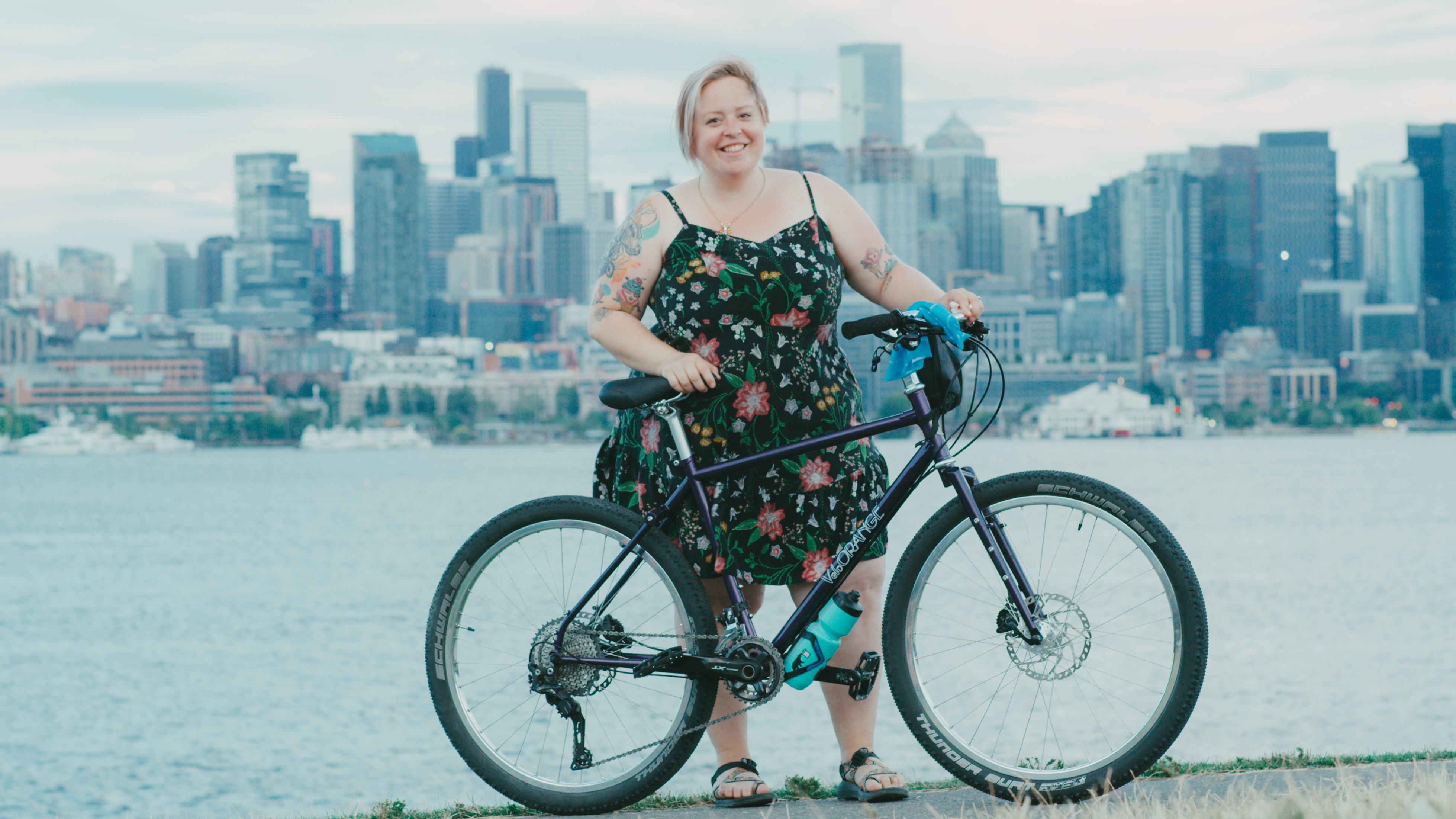
With the amount of anti-fatness messaging that crops up everywhere from social media to the national news, the positive reception of ‘All Bodies on Bikes’ is a refreshing milestone in what appears to be a slowly-but-surely changing landscape. Have Kailey and Marley seen any change in perceptions towards fatness?
“I can only speak to my own experience, but I think in my personal life it’s changing,” Kailey answers. “A lot of my friends and family who are in smaller bodies have become more aware, and are showing up for me in my daily life in a way that shows they’re clearly hearing the message.”
“I think bike shops are getting better,” agrees Marley. “We’re seeing it throughout the industry, with weight limits being displayed more clearly, even on things like saddles and seatposts.”
It would be easy to simply chalk it up to ‘social media’ but Marley gives credit where it’s due: “I think it’s a lot of work on the part of Fat Activists being very loud and relentless and sharing the message that we’re here, we have money to spend, and we deserve to be treated like humans.”
Not only is it a fundamental human right to be recognised and respected in the bodies we inhabit, it makes good business sense for brands to start catering for a broader market.
“There’s a whole demographic of people that companies could be selling things to if they had the right sizes or weight limit,” says Kailey. “And it’s not just financial, there’s a general desire to make our spaces more inclusive in a lot of ways.”
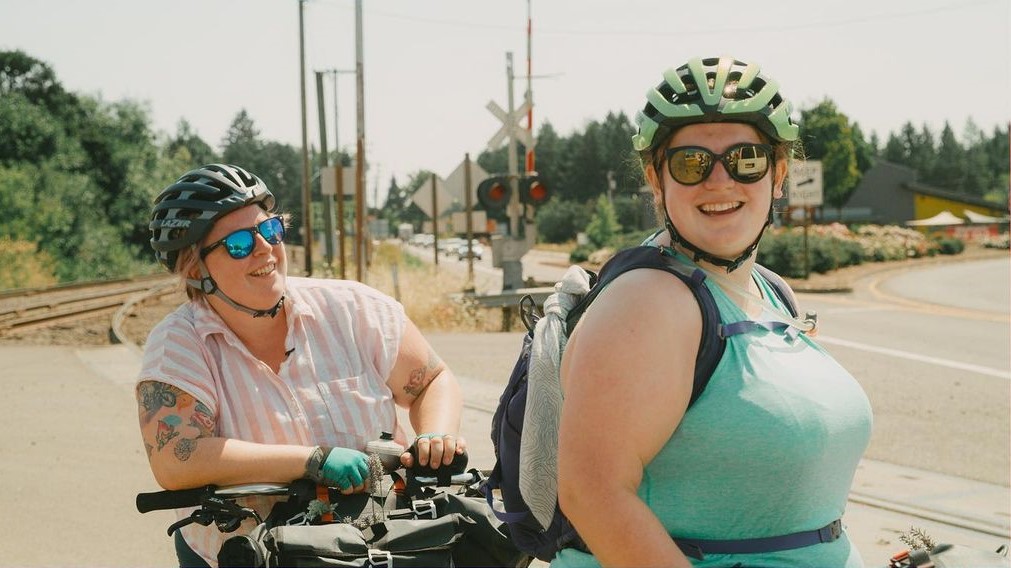
Of course, change is a slow process and we can’t expect major improvements overnight. There are still plenty of unjustified judgements and common misconceptions thrown at larger-bodied people on bikes. When we ask what the most common misconception could be, both Kailey and Marley answer in unison: “That we’re beginners.”
“There are worse misconceptions, but that’s the one that really grinds our gears,” says Kailey. “It happens constantly, I could be taking friends on their first ride, and a stranger will assume I’m the newest person.”
Marley adds, “there is nothing wrong with being a beginner, of course, but dammit, we’re not beginners!”
It’s not just about that, though. As Kailey is quick to point out, there are plenty of other harmful myths surrounding fat cyclists — or anyone with a larger body, for that matter — that need addressing if this is to be a truly inclusive and welcoming space for everyone.
“I think one really harmful misconception is that people in larger bodies, whenever they’re moving [like cycling] are doing so to lose weight,” she explains. “It assumes the only motivation fat people would have to move their body is to change it, rather than celebrate their body, or move because it’s fun, which is a privilege that we afford to people in smaller bodies.”
She continues: “I also think it keeps a lot of people away from cycling, because they don’t want to change their body and they see cycling as a way to do that, rather than to have fun. That is detrimental.”
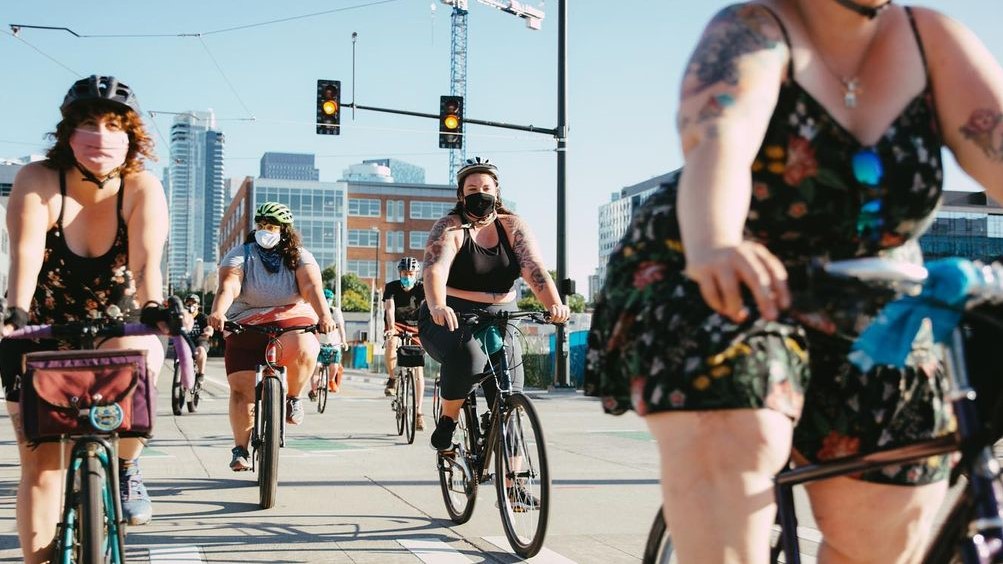
Mildred joined as Reviews Writer for Cyclingnews and BikePerfect in December 2020. She loves all forms of cycling from long-distance audax to daily errand-running by bike, and does almost everything on two wheels, including moving house, and started out her cycling career working in a bike shop. For the past five years she's volunteered at The Bristol Bike Project as a mechanic and session coordinator, and now sits on its board of directors.
Since then she's gone on to write for a multitude of cycling publications, including Bikeradar, Cycling Plus, Singletrack, Red Bull, Cycling UK and Total Women's Cycling. She's dedicated to providing more coverage of women's specific cycling tech, elevating under-represented voices in the sport, and making cycling more accessible overall.
Height: 156cm (5'2")
Weight: 75kg
Rides: Stayer Groadinger UG, Triban RC520 Women's Disc, Genesis Flyer, Marin Larkspur, Cotic BFe 26, Clandestine custom bike

